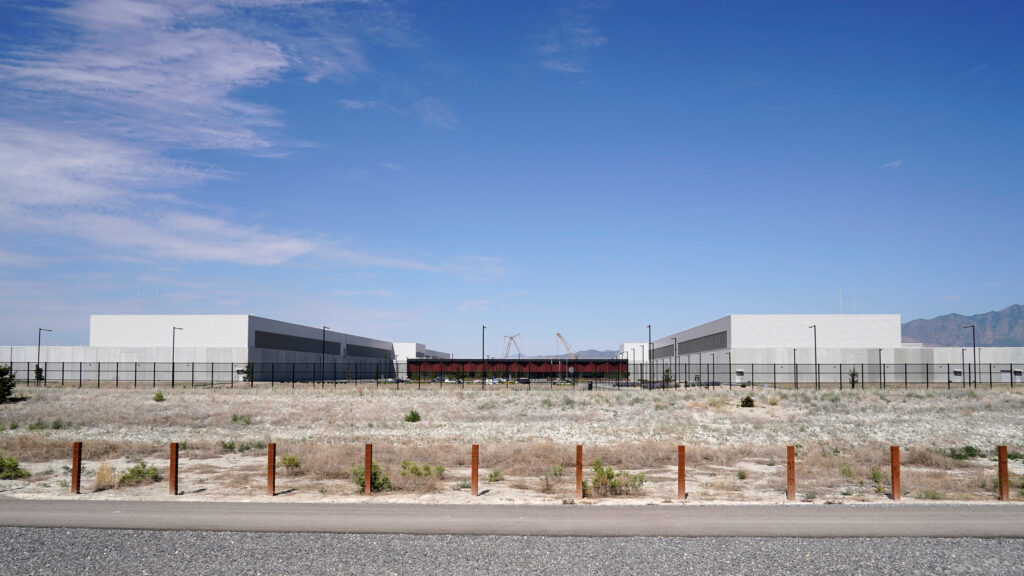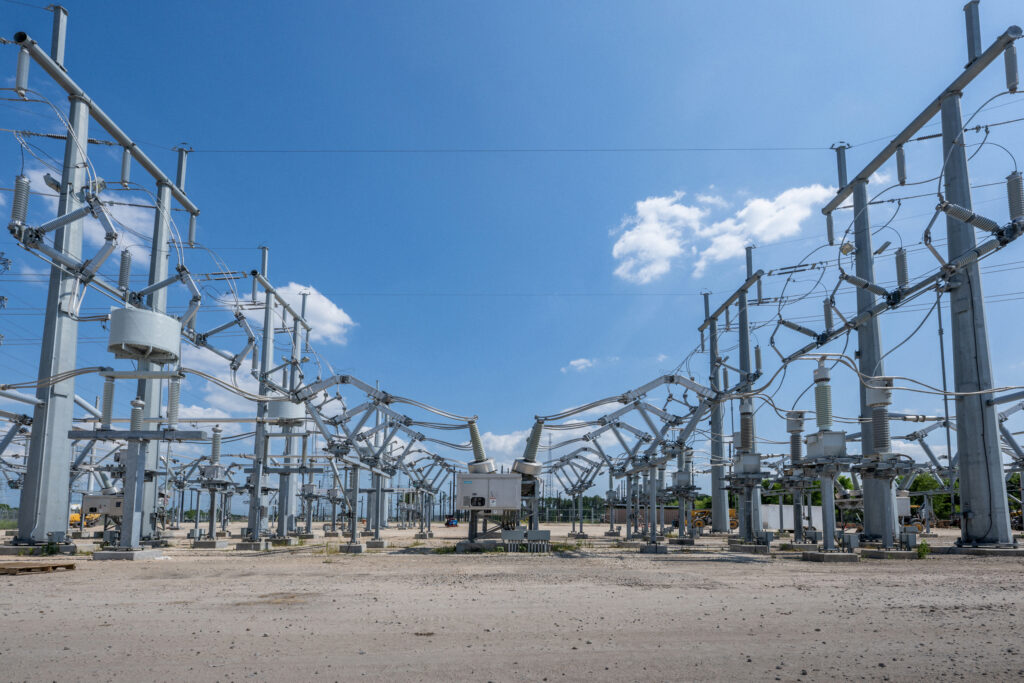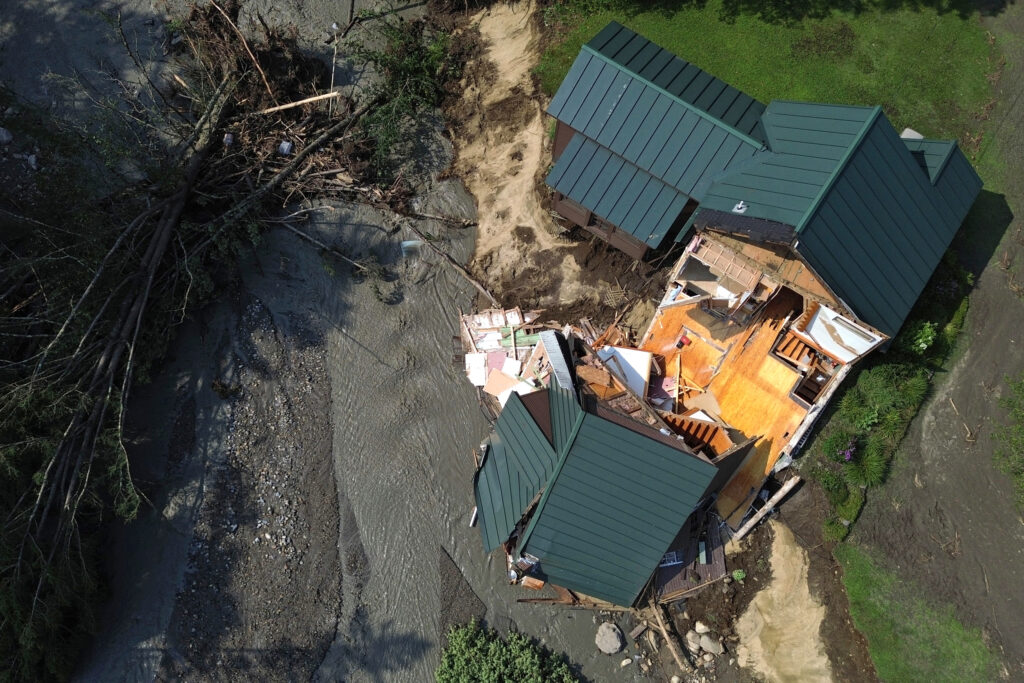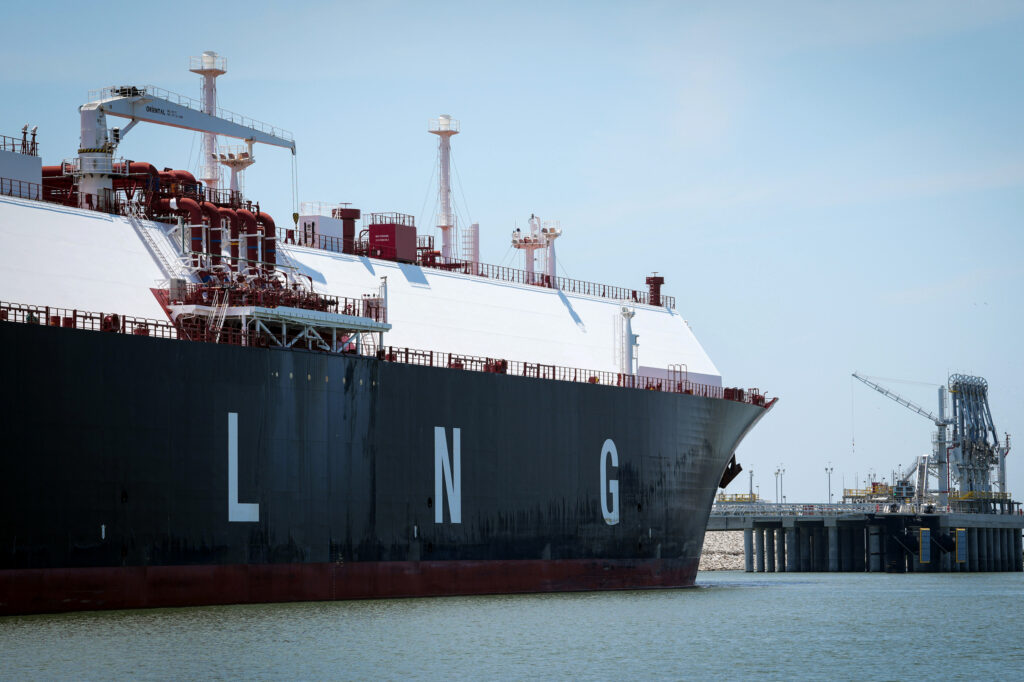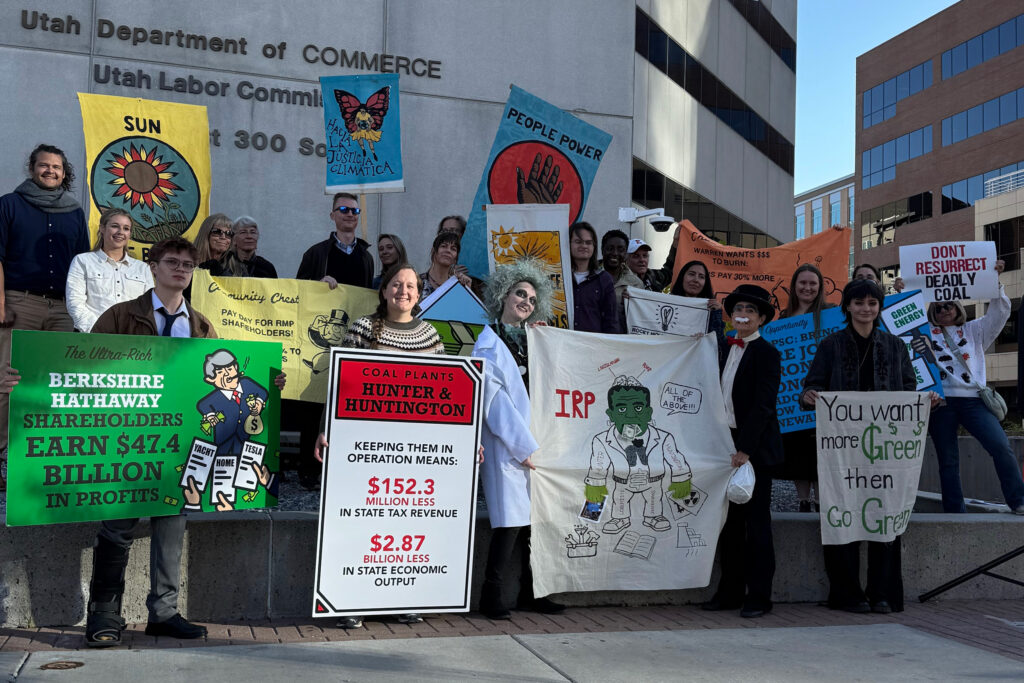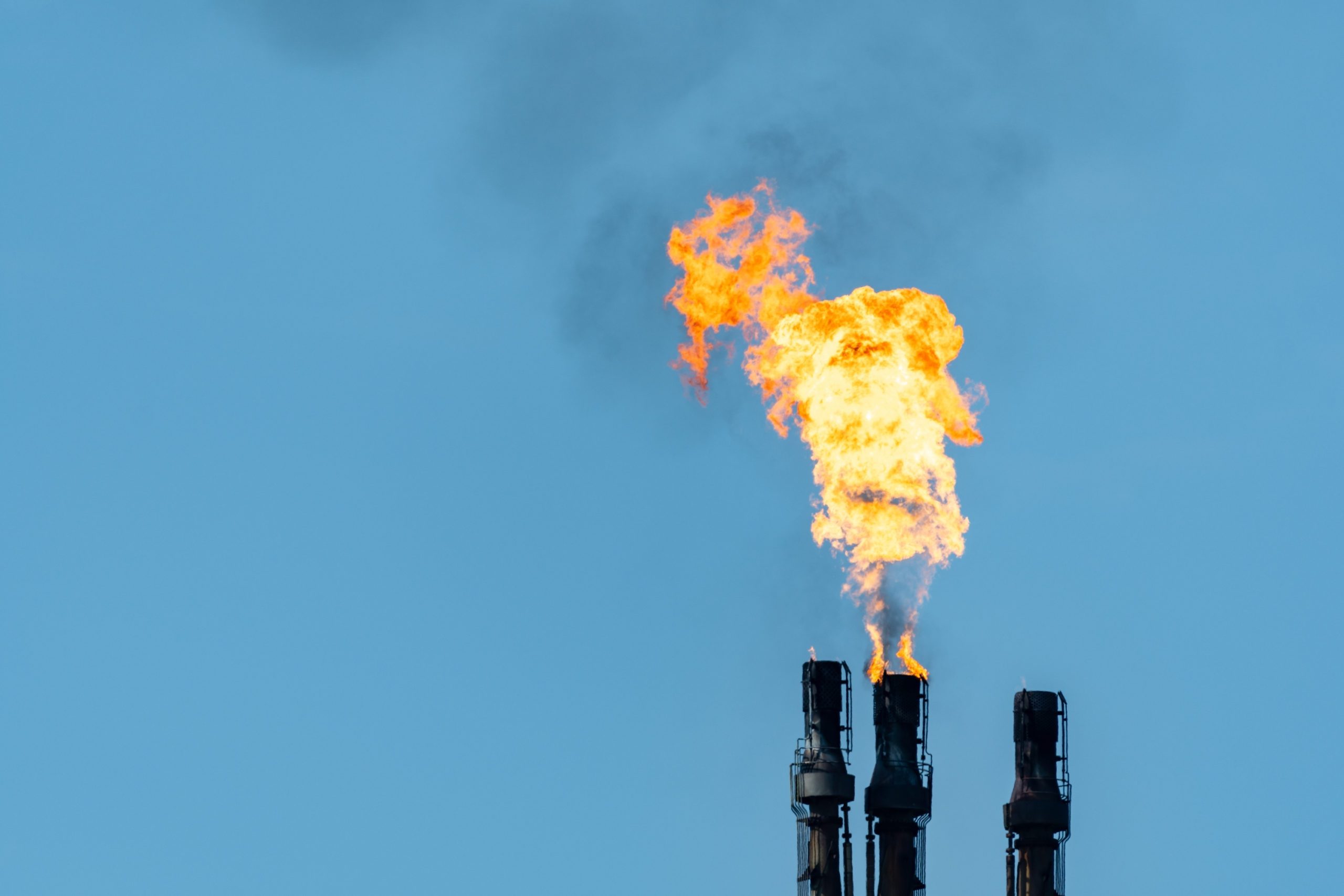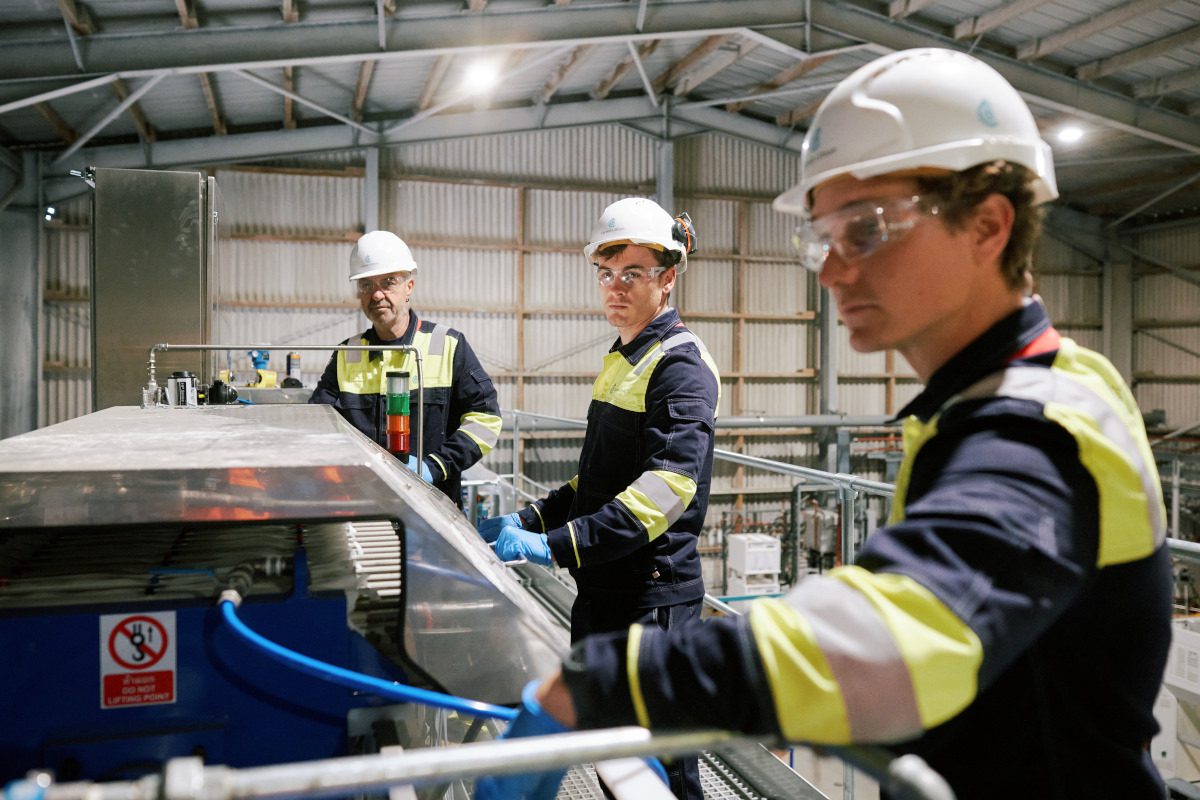This article was originally published by PublicSource, a nonprofit newsroom serving the Pittsburgh region. Sign up for its free weekly newsletters at publicsource.org.
This story was supported by the Pulitzer Center.
“The biggest green initiative on the planet.” That’s what EQT CEO Toby Rice called his company’s exports of liquified natural gas before a Waynesburg crowd in September.
The gas the Pittsburgh corporation extracts from the Marcellus Shale—liquified and shipped around the world as LNG—would be a key solution to the world’s warming crisis, Rice said in remarks that echoed messaging in media appearances and at similar “Unleash U.S. LNG” events throughout the region.
By then, Earth and its inhabitants had experienced nine months of the hottest year ever recorded, with hundreds of millions of people enduring extreme heat. Smoke from Canadian wildfires—the largest by area in North American history—had blanketed Pittsburgh, Appalachia and much of the United States. Antarctic sea ice shrunk by a record margin, floating in ever warmer ocean waters.
Scientists have long warned that methane, the main ingredient in the gas fracked out of Appalachia, is a greenhouse gas 80 times more potent than carbon dioxide over a 20-year span. The International Energy Agency [IEA] has said that if the world is to stay within safe limits of global heating and have a chance at achieving net-zero emissions by 2050, new fossil fuel development must stop immediately.

Three years later, Rice and EQT have become a prominent voice—and perhaps the prominent American gas producer—making the argument that their carbon fossil fuel is a key solution to a carbon-caused climate crisis.
Rice told those gathered in Waynesburg: “If you care about climate, you should care about unleashing U.S. LNG.”
Scientists say that’s dangerously false.
“The solution to a problem created by fossil fuels cannot be more fossil fuels,” said the climate scientist Michael Mann, who is the director of the Center for Science, Sustainability and the Media at the University of Pennsylvania.
Rice’s plan—touted among rural communities in the company’s most heavily fracked counties, spread via television appearances on major business networks and pushed by Rice at the UN’s annual climate conference—calls for a fourfold expansion of American LNG exports over the next six years.
By 2023, the U.S. had already become the largest exporter of LNG in the world, and such an expansion would require a buildout of pipelines and terminals, shipping and receiving infrastructure along with a vast network of Marcellus wells to supply the gas to fill foreign contracts. If Rice’s vision were to be realized, 70% of new domestic gas production would occur in the Appalachian Basin, which spans Pennsylvania, West Virginia and Ohio.
EQT did not respond to PublicSource’s requests for an interview with Rice or to questions regarding the climate science surrounding the company’s LNG claims.
“We think natural gas is going to be the energy choice of the future,” Rice said in an interview in Dubai at last year’s United Nations COP28 conference. Last year, the company completed the $5 billion acquisition of the gas producer Tug Hill, which operates enough wells to keep up production for decades, Rice said, and EQT has been a fierce advocate for the Mountain Valley Pipeline—a crucial piece of infrastructure in the company’s plans to transport its product from Appalachia. Last month, EQT announced that it would acquire Equitrans, the operator of the yet-to-be completed pipeline, to better compete in a “global era of natural gas.”
This year’s U.S. election may determine which prevails: the company’s vision or scientists’ warnings.
Greenwashing LNG
Rice told a woman who asked a question about climate change in Waynesburg: “You should be supporting pipelines and supporting more natural gas development because we are the biggest solution to lowering the biggest source of emissions on the planet.”
The core of EQT’s argument aligns with that of much of the fossil fuel industry: American LNG exports, industry leaders say, are a lower-carbon replacement to foreign coal, which is the largest source of global emissions.
The American Petroleum Institute, which advocates for U.S. fossil fuel interests, and the Marcellus Shale Coalition, which represents the gas industry in the Appalachian Basin, frequently point out that gas emits less carbon dioxide than coal or oil when burned.
Independent scientists, though, say that the methane emissions generated by LNG’s production and transport, as well as the opportunity cost of forgoing investment in renewable energy, outweigh the concept of LNG as a climate solution.
On the list of false solutions to climate change, said Mann, “Chief among them is this idea that natural gas will save us as a transition fuel.” He called that concept “greenwash and deceptive half-truths.”
“If you’re creating new fossil fuel infrastructure, that is ultimately incompatible with any effort to limit warming below what is arguably a catastrophic level,” he said in a recent interview. “They are giving the false impression that natural gas is going to help us decarbonize our economy when it’s not.”
It’s still a fossil fuel, he said. “We’re burning it. We’re putting carbon pollution into the atmosphere. In addition, we’re potentially adding large amounts of methane to the atmosphere.”


Methane emissions are the “biggest environmental impact facing this industry,” Rice acknowledged at a town hall last year in Washington County. “We’re taking it very seriously.” Rice said the company has replaced methane-leaking pneumatic devices and switched to gas-powered “electric” fracking fleets.
It’s all part of EQT’s claim that the company will achieve net-zero carbon emissions by 2025. That target, however, specifically excludes some emissions, known as scope 3, which include carbon emissions generated from the transportation, distribution and burning of gas.
The international scientific community, reflected in the latest report from the United Nations’ Intergovernmental Panel on Climate Change [IPCC], outlines numerous scenarios that could limit warming to 1.5 or 2 degrees as set forth in the Paris Climate Accords. Under the scenarios outlined by the IPCC, the role that natural gas plays in global energy generation should only shrink if the global economy is to effectively decarbonize.
“We need to get to net zero by the middle of the century, and a large expansion of natural gas just is not consistent with that,” said Paulina Jaramillo, a lead author of the IPCC report and a professor of engineering and public policy at Carnegie Mellon University. “From a climate perspective, the argument to support export of natural gas from the U.S. is pretty weak.”
Jaramillo said 20-year-old comparisons of gas and coal aren’t relevant anymore.
“It’s not just getting rid of coal with another fossil fuel,” Jaramillo added. “It is getting rid of coal and reducing all your other fossil fuel combustion. And so saying that natural gas is better than coal is not saying much.”
Robert Howarth, a biogeochemist at Cornell University who specializes in the study of methane, calculated the lifecycle greenhouse gas emissions from LNG to be a minimum of 44% greater than the emissions from coal in a study last year.
The comparison to coal is part of the way that LNG is being sold, Howarth said in a recent interview. “But under no circumstances is it better than coal.”
Howarth said that in the wake of energy crises like those caused by the Russian invasion of Ukraine, energy needs would be better met by reopening closed coal facilities temporarily rather than by expanding LNG infrastructure.
The paper, which is undergoing peer review, cites methane emissions inherent to extracting, liquifying and globally transporting fracked gas and argues a need to “move away from the use of LNG as a fuel as quickly as possible, and to immediately stop construction of any new LNG infrastructure.”
“Ending the use of LNG should be a global priority,” the paper concludes.
Taking on the President
In December, 170 scientists signed a letter to President Joe Biden citing Howarth’s research and asking the administration to halt pending LNG export projects. Allowing LNG exports to expand, the letter said, will “put us on a continued path toward escalating climate chaos.”
A month later, the Biden Administration announced that it would temporarily pause approvals for new LNG export projects. The administration attributed the pause to an evolving understanding of “the perilous impacts of methane on our planet” and potential increased energy costs for Americans.
Four days later, Rice responded with a letter to U.S. Energy Secretary Jennifer Granholm, calling the decision “a part of a dangerous movement, one that negatively impacts our efforts to address climate change. … It is one that has inserted unpredictable chaos and costs into the very system seeking to provide our nation with the power and prosperity needed to effectuate our climate goals.”


In Washington a week later, Rice testified before the U.S. House Energy and Commerce Committee. The decision was “pure politics,” Rice told the committee. “The moratorium was made under the guise of updated research and a claim that we needed updated studies on the environmental and economic impact of U.S. LNG.”
He called the move an “election year stall designed to garner votes,” and said that the Biden administration is “touting the moratorium as a win for climate. In reality, it is significantly a blow backwards towards climate.”
The LNG pause has stirred widespread discontent among industry leaders and politicians. In February, 23 Republican-led state attorneys general laid the groundwork for a legal challenge to Biden’s order in a letter to the administration, arguing that such a move requires approval from Congress.
In Pennsylvania, Democratic senators Bob Casey and John Fetterman warned they would oppose the order if the pause threatened in-state jobs. In an interview this month, Gov. Josh Shapiro told the Financial Times that the LNG pause is “critically important to our state,” warning Biden he may lose votes in an important swing state if he does not reverse course.
The winner of this year’s presidential election will likely decide the future of American LNG. Biden has not committed to permanently codify an LNG pause if he were to secure a second term in November.
In Iowa, Republican presidential candidate Donald Trump told supporters that if elected, “we are going to drill, baby, drill.”


European Leaders Say No Thanks
A core part of Rice’s argument for LNG is based on energy security.
American gas exports, he often says, are a bulwark against Russian aggression. If he successfully unleashes LNG, “we will be lowering energy bills for people around the world,” Rice said during a town hall in Washington County last year. “We will be eliminating Putin’s influence on the world stage. We will be replacing petro-dictators with freedom gas.”
In January, more than 60 lawmakers, many from the European Parliament wrote to Biden, noting that American LNG played an important role in aiding Europe amid a short-term energy crisis wrought by Russia’s invasion of Ukraine. Since then, they wrote, almost all European Union member states have reduced and continue to reduce their gas demand.
This story is funded by readers like you.
Our nonprofit newsroom provides award-winning climate coverage free of charge and advertising. We rely on donations from readers like you to keep going. Please donate now to support our work.
Donate Now
“We are concerned that a false depiction of European energy needs is now being used as an excuse by the fossil fuel industry and their allies to dramatically expand U.S. LNG exports to the global market,” the letter read.
From a supply and demand perspective, a quadrupling of LNG export capacity is “especially bullish,” said Anne-Sophie Corbeau, former head of gas analysis at BP and currently a global research scholar at the Center on Global Energy Policy at Columbia University. “I don’t think I have seen anybody forecasting a quadrupling of U.S. energy exports in any scenario.”
Some analysts say that LNG is already overbuilt, and that exports since the beginning of the war in Ukraine have raised energy prices for U.S. consumers. There are a number of LNG export projects that were approved prior to Biden’s LNG pause but are yet completed, and those are set to nearly double American LNG capacity by 2028.
“With so much LNG, do we need additional LNG at all?” Corbeau questioned.
Quinn Glabicki is the environment and climate reporter at PublicSource and a Report for America corps member. He can be reached at [email protected] and on Instagram and X @quinnglabicki.
This story was fact-checked by Matt Maielli.
This article first appeared on PublicSource and is republished here under a Creative Commons license.






